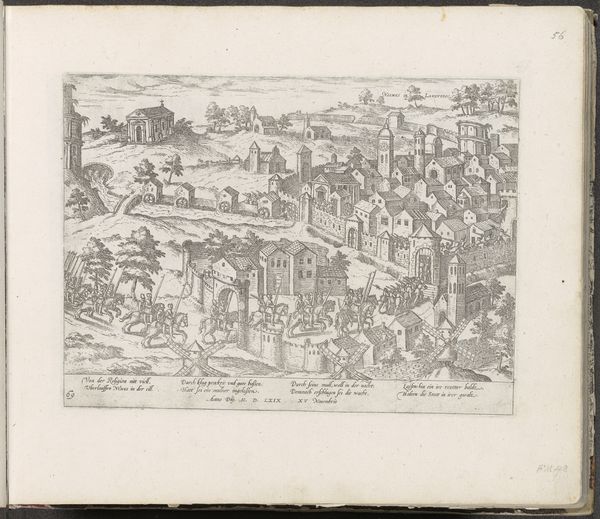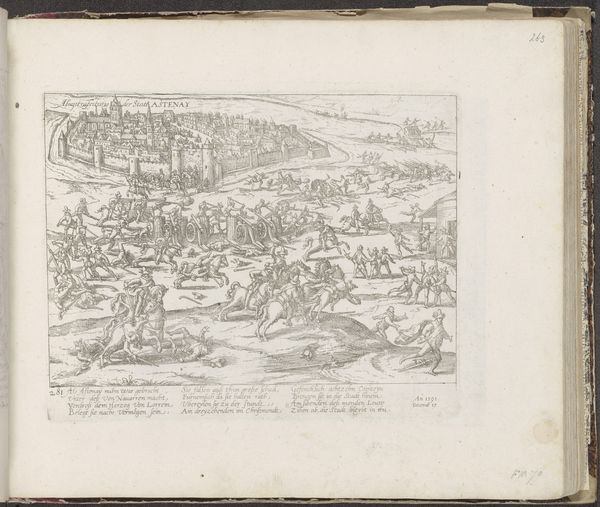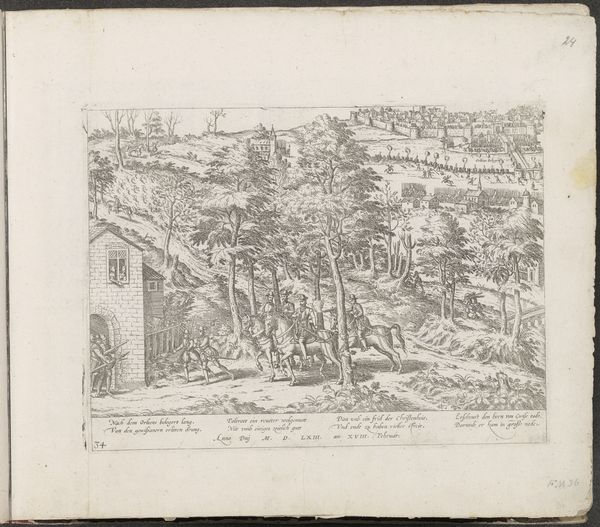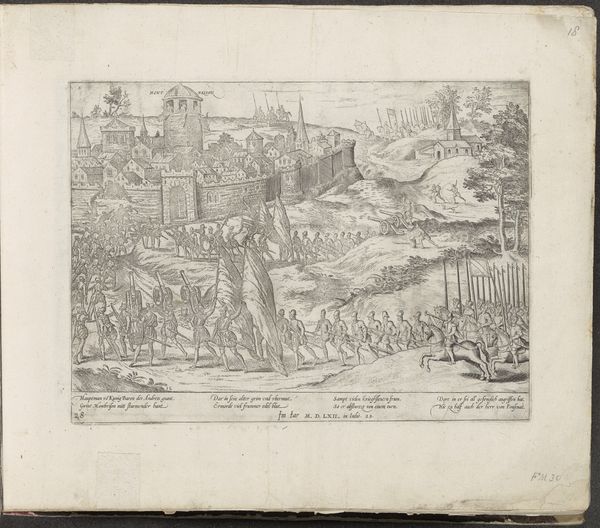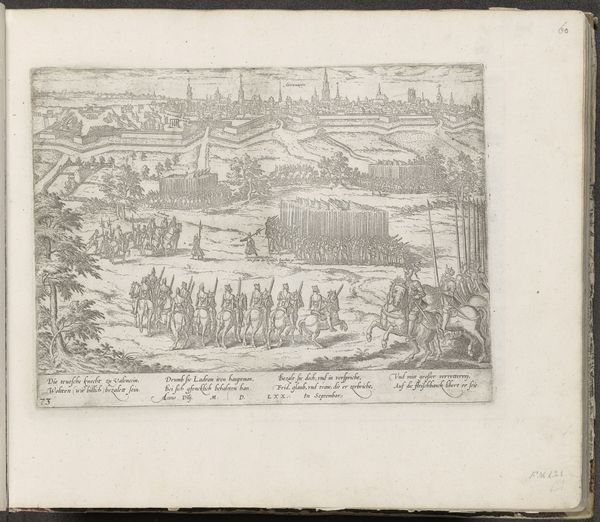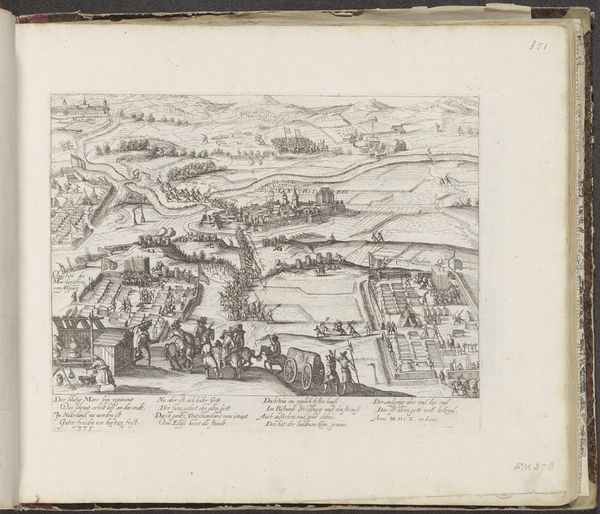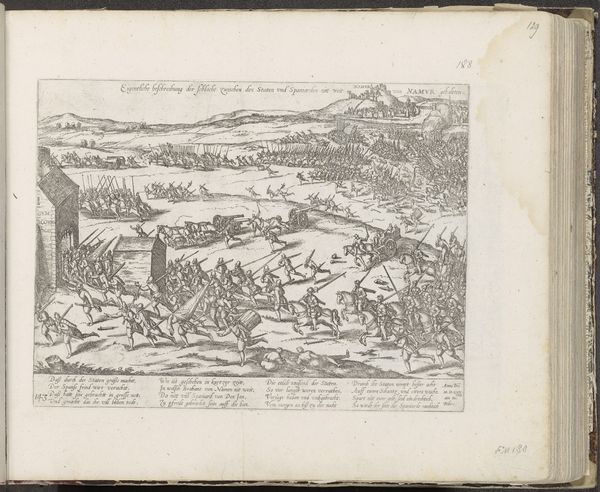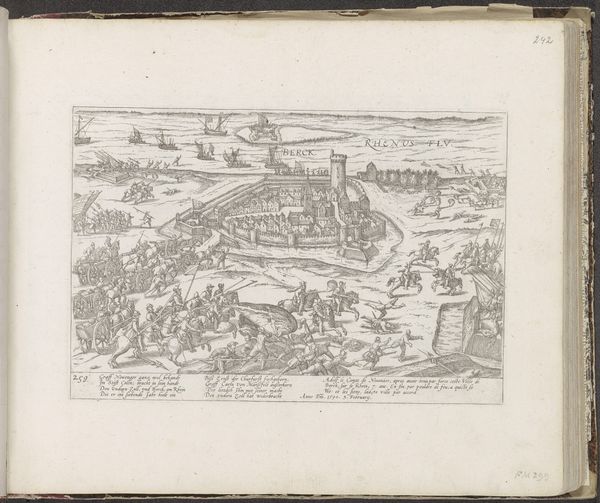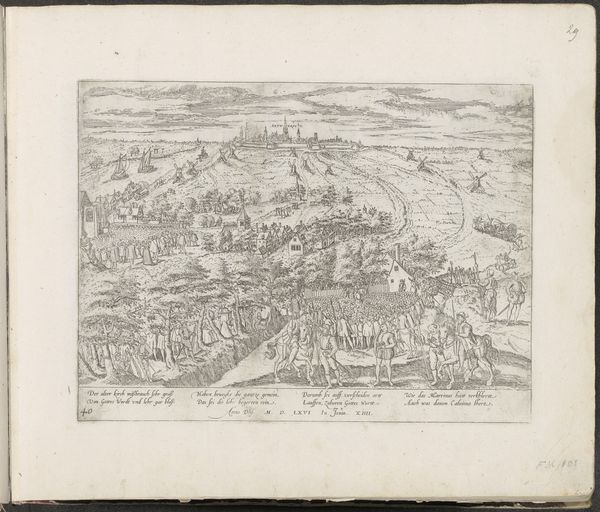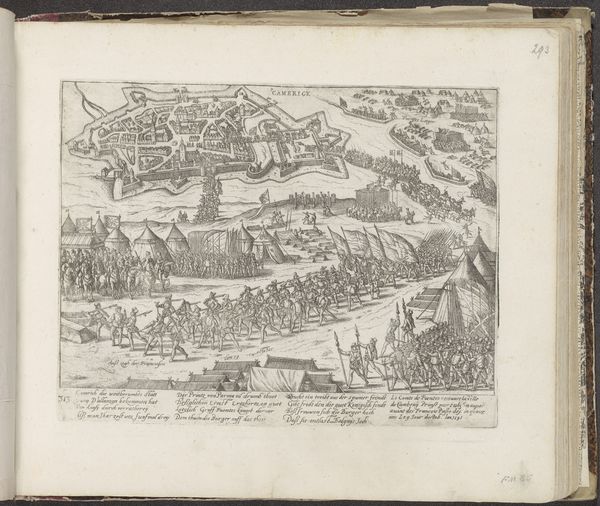
drawing, print, ink, engraving
#
drawing
#
narrative-art
# print
#
pen sketch
#
sketch book
#
landscape
#
mannerism
#
personal sketchbook
#
ink
#
sketchwork
#
ink drawing experimentation
#
pen-ink sketch
#
pen work
#
sketchbook drawing
#
history-painting
#
storyboard and sketchbook work
#
sketchbook art
#
engraving
Dimensions: height 208 mm, width 280 mm
Copyright: Rijks Museum: Open Domain
Curator: This engaging engraving, created between 1567 and 1571, is entitled "Castelnau komt naar Amboise, 1560," and is attributed to Frans Hogenberg. It currently resides here at the Rijksmuseum. Editor: Wow, what a wonderfully strange procession. It’s like a fairytale scene, so intricate with all the figures and landscapes packed together in delicate lines! I'm immediately struck by its surreal quality. Curator: Indeed. Hogenberg’s work serves as a potent reminder that art has long been used as a means to chronicle history. The artwork depicts Castelnau's arrival to Amboise. Viewing it now, centuries later, allows us to consider how power, authority, and spectacle were represented and understood in 16th-century Europe. Editor: Absolutely. I find myself thinking about the role of the artist here – like a visual journalist documenting this historical arrival. Look at the meticulous details of the buildings, the way he has shown movement in the horses; I am trying to imagine being present there at the time of the arrival of Castelnau. Curator: And in this context, it’s critical to note that these prints were designed for wide circulation. Beyond simple documentation, consider how such images were wielded as tools of propaganda, solidifying power through curated narratives. What message did Hogenberg’s vision convey about the unfolding drama and, possibly, which side did it subtly support? Editor: That's a point very well-taken! Propaganda has a way of being visually appealing so that people are easily drawn towards the message behind it. Perhaps it even functioned to create a consensus regarding certain individuals. On another note, did many others create artwork depicting similar political figures and political stories from back then? I find it interesting how that time was interpreted artistically by many people. Curator: You’re leading us down essential paths here, questioning both intent and distribution! The prevalence of such prints signals a visual culture saturated with political messaging, inviting critical questions about social impact and individual agency then and even now. Editor: Definitely. Getting lost in art, you sometimes find an uncanny relevance. It always goes back to asking: “what is the underlying meaning in all of this?" Thank you! Curator: Likewise. I believe Hogenberg's engraving delivers profound insights into societal issues of the time period.
Comments
No comments
Be the first to comment and join the conversation on the ultimate creative platform.
